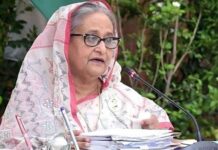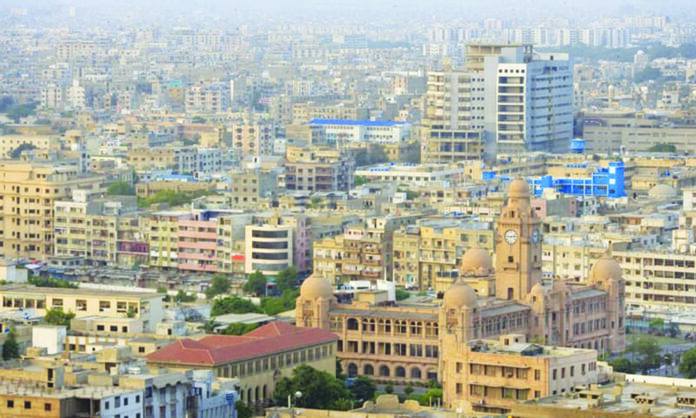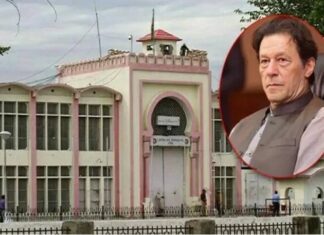As the climate crisis escalates, cities stand at the crossroads of both immense challenges and unparalleled opportunities. The race to transform our urban spaces into climate-smart cities is no longer a distant ideal— it is an urgent imperative for survival. With over 4.4 billion people currently living in cities and estimates suggesting two-thirds of the global population will be urban by 2050, the stakes have never been higher. Cities like Karachi, Dhaka, and Mumbai are not only expanding at an unprecedented rate but are also becoming increasingly vulnerable to the severe impacts of climate change. This is a clarion call for immediate, actionable strategies to ensure these urban hubs can adapt, thrive, and protect their populations.
Rapid urbanization brings with it a myriad of socio-economic and environmental pressures. Particularly in the Global South, cities face the dual burden of unchecked urban growth and heightened climate risks. Karachi, Pakistan’s economic heart, contends with rising temperatures, unpredictable monsoon patterns, and frequent urban flooding that disrupts millions of lives. Similarly, Lahore has seen increasingly intense heatwaves that challenge its infrastructure and pose severe health risks, especially to the most vulnerable. These cities are emblematic of the broader challenges that many developing urban centers are grappling with globally.
Transforming these challenges into opportunities requires a comprehensive roadmap for climate adaptation. Climate-smart cities are not merely aspirational— they are essential for sustainable urban development. While cities like Copenhagen and Singapore are pioneering innovative solutions, the Global South must forge its own path, grounded in local realities and financial constraints.
One such low-cost, high-impact intervention is rainwater harvesting. Islamabad has already begun exploring this solution, which addresses water scarcity while reducing urban flooding— an issue that has become all too common during the monsoon season. Dhaka, a fellow South Asian megacity, has implemented flood management systems that utilize natural wetlands to absorb excess rainwater, easing the pressure on overburdened drainage systems. These examples highlight the necessity of localized solutions that align with each city’s unique geographical and socio-economic landscape.
In essence, the vision of climate-smart cities must transition from rhetoric to reality. This is not just about preparing for the future— it’s about securing our present. The urban centres of today must be redesigned not only to survive but to thrive in the face of the climate crisis. Let us seize this opportunity to revolutionize our cities, making them not just resilient to climate shocks but vibrant, inclusive, and sustainable for generations to come.
Urban greenery is another powerful tool against the urban heat island effect, which exacerbates heatwaves across South Asia. Karachi, often seen as a sprawling concrete jungle, could greatly benefit from expanding its green cover through vertical gardens and urban forests. Mumbai has successfully integrated green spaces into its urban planning to lower temperatures and improve air quality, setting a valuable precedent. Islamabad’s efforts to expand green belts and tree plantations are promising, but they need to be scaled up and sustained to make a meaningful impact.
Yet, even these commendable measures are not enough on their own. A broader, integrated approach is critical. Cities in low-income countries often lack the financial means to deploy costly resilience measures, making it essential to leverage cost-effective solutions with scalable benefits. For example, enhancing building insulation can significantly reduce energy demands for cooling in hot climates, benefiting both the environment and low-income households’ financial stability.
Shifting from vulnerability to resilience requires a paradigm shift in urban planning. This means moving from reactive to proactive strategies that embed climate-informed insights into every aspect of city development. Pakistani urban centers like Lahore and Peshawar could adopt climate risk assessment frameworks akin to those used by Tokyo, enabling them to identify vulnerabilities and prioritize resilience investments.
The socio-economic benefits of climate-smart cities extend far beyond mere survival—they contribute to long-term economic stability and social well-being. In Karachi, informal settlements that house a large portion of the population are often hit hardest by climate-related disasters. Empowering these communities with localized adaptation strategies, such as community-managed water storage and decentralized solar energy systems, can enhance resilience while fostering social equity.
Globally, the transformative potential of climate-smart urban design is increasingly recognized. Kigali, Rwanda, has set a regional precedent with its eco-friendly public transport and green building initiatives, while Dubai incorporates sustainable design principles into its ambitious urban projects. These international examples offer valuable lessons for Pakistan and other nations in the Global South, where rapid urbanization is both a challenge and an opportunity.
The journey towards resilient urban spaces is undoubtedly complex, but it is achievable through innovation, collaboration, and political will. Local governments, private sectors, and civil society must work in tandem to build a sustainable urban future. Karachi, Lahore, and other Pakistani cities stand at a pivotal moment; they can either continue with fragmented, reactive responses or embrace a forward-thinking vision that places climate adaptation at the heart of their urban strategies.
In essence, the vision of climate-smart cities must transition from rhetoric to reality. This is not just about preparing for the future— it’s about securing our present. The urban centres of today must be redesigned not only to survive but to thrive in the face of the climate crisis. Let us seize this opportunity to revolutionize our cities, making them not just resilient to climate shocks but vibrant, inclusive, and sustainable for generations to come.























